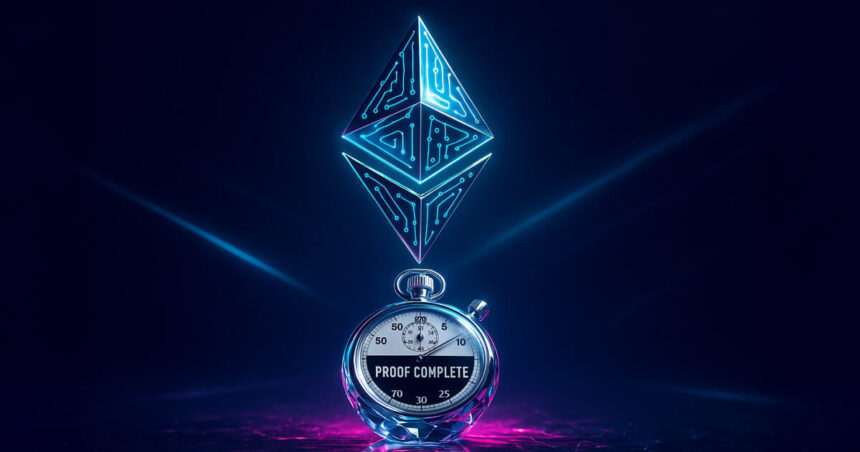The transient demonstrated real-time zero-knowledge proofs for Ethereum blocks, producing encrypted proofs in lower than 12 seconds.
The transient SP1 “Hypercube” ZKVM generated proof of Ethereum block 22309250 (143 transactions, 32 million fuel) in 10.8 seconds, with inner benchmarks exhibiting that 93% of the common 10,000 mainnet blocks could be confirmed in lower than 12 seconds.
This achievement illustrates the technical leap of zero-knowledge house. A very new proof system primarily based on many polynomial polynomials, an optimized CUDA kernel for operations reminiscent of log-up GKR and sum-check, and a drop-down cloud structure that spans lots of of GPUs. Co-founder Uma Roy has characterised the milestones because of advances in encryption, {hardware} acceleration and engineering throughout distributed programs.
Roy commented,
“This can be a ZK moon second. The true-time Ethereum proof has landed.
If I had requested somebody from ZK a yr in the past if this was potential, they’d have stated it was a literal moonshot. ”
Efficiency milestones slim the latency hole between proof technology and block time, however Ethereum co-founder Vitalik Buterin outlined the remaining limits.
The present outcomes signify the efficiency of the common case quite than the worst case. Buterin emphasised that the worst block proofs should stay inside block time to show in actual time that they’re appropriate for Layer 1 safety.
Moreover, the SP1 proof has not been formal validated, with power necessities hovering near 100 kW per proof. He additionally identified that by increasing the layer-1 fuel restrict on Ethereum by an order of magnitude, it depends on additional proof effectivity.
Neighborhood debate has emerged centering on decentralization and proof of capability. As mentioned within the Ethereum Magicians Discussion board, researcher Dankrad Odendaal argued that Prover's {hardware} decentralization objectives could be quickly relaxed.
Odendaal famous that overhead proofs may very well be lowered by a number of orders of magnitude, permitting for additional advantages by means of improved structure or specialised {hardware}.
He proposed that proofs are reversible, in contrast to different areas of protocol scaling that carry a everlasting burden. If scalability pushes prover capability, the community may return to low fuel limits with out long-term state progress penalties.
Odendaal additionally stated that proof technology is much less inclined to centralization danger than full stateful nodes in parallel between distributed infrastructures. Even when single digits of overhead shouldn’t be confirmed, unfold throughout many machines permits delay targets to be achieved whereas sustaining a number of honest assumptions for system integrity.
Deploying SP1 in a real-time context is the end result of each encryption innovation and infrastructure coordination.
The concise implementation extends to reveal steel deployment and efficiency tuning distribution workloads, nevertheless it exhibits that power and formal validation constraints stay on the trajectory, not on the endpoint.
Additional reductions in latency and energy, along with protocol-level integration, kind the power of Ethereum to lock the utmost trusted execution immediately into the bottom layer.
It’s talked about on this article
(TagStoTranslate)Ethereum(T)Options(T)Privateness(T)Expertise(T)Web3


